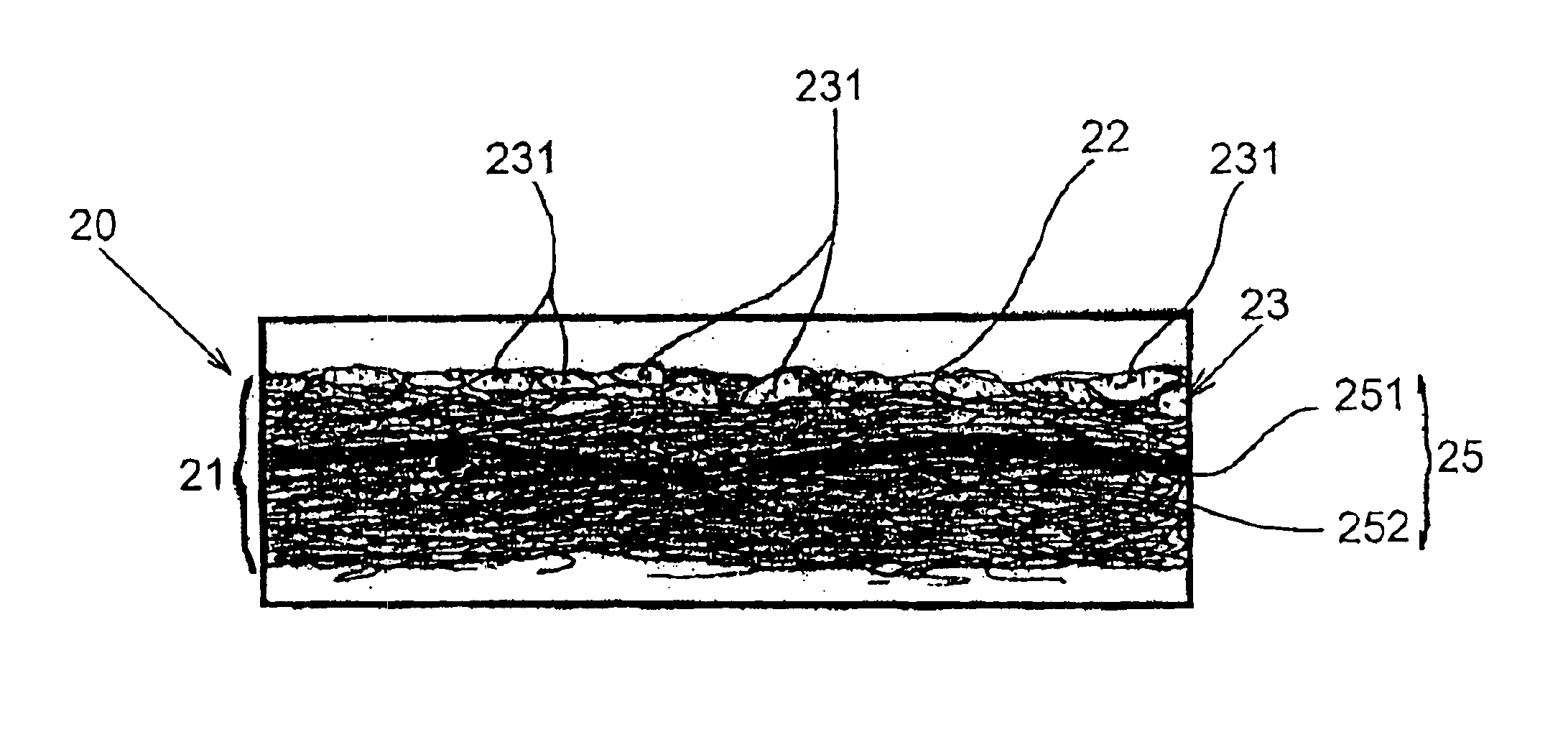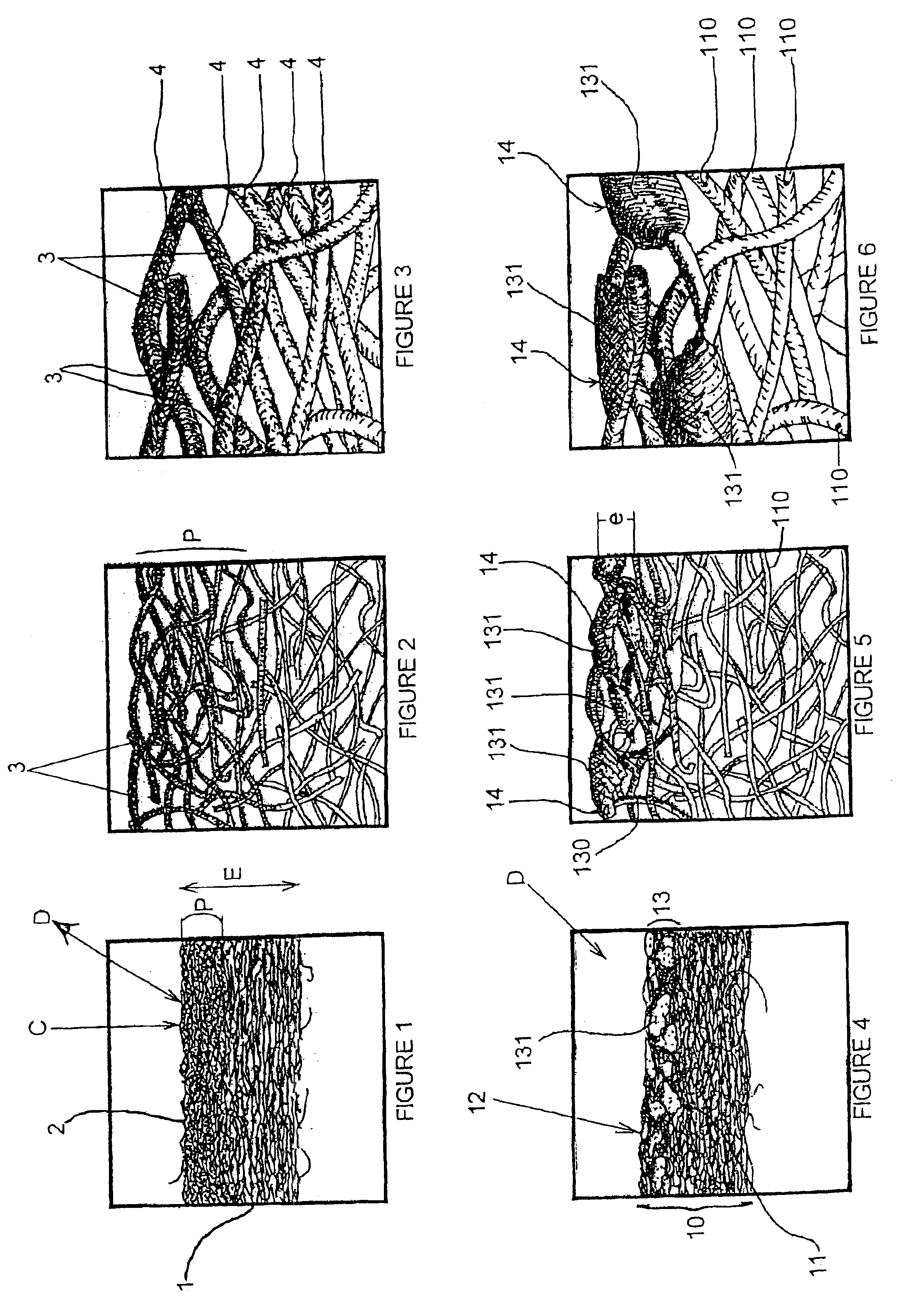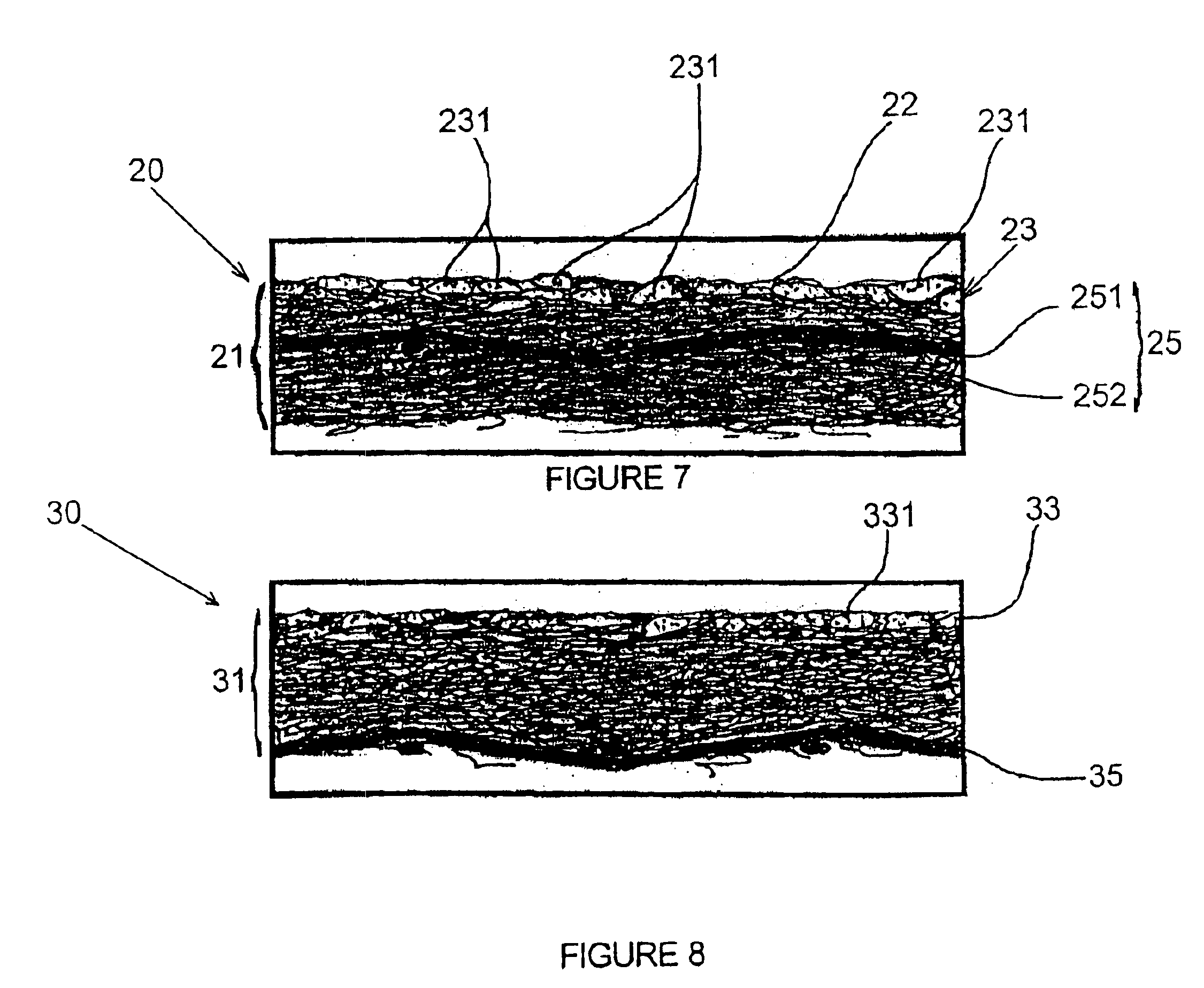Screen formed from a stretched flexible surface bearing a print
a flexible surface and print technology, applied in the field of stretched flexible surfaces, can solve the problems of insufficient mechanical stability, inability to give precise and clear images, and inability to air-permeate the layer receiving ink, so as to achieve excellent graphic reproduction, resist dirt, and sufficient mechanical stability
- Summary
- Abstract
- Description
- Claims
- Application Information
AI Technical Summary
Benefits of technology
Problems solved by technology
Method used
Image
Examples
Embodiment Construction
[0036]According to FIGS. 1 to 3, a known screen shown schematically in cross-section on three different scales of magnification (×20, ×80, ×350) is formed by a non-woven fabric 1 in which a decoration has been printed, from the face 2, by projection of ink jets. This projection is shown by the droplets 3 attached to the fibers 4 without however forming a film between the fibers due to the fluidity of the ink.
[0037]It will be noted that the print formed by the droplets 3 on the fibers 4 extends to a certain depth P which is substantial relative to the overall thickness E of the non woven fabric 1.
[0038]The direction of printing is shown by the arrow C. This direction of the ink jet or jets is generally perpendicular to the surface of the non-woven fabric. It can also be done at a different angle. However, due to this orientation of the ink jets and the penetration of the droplets, when it is viewed in a direction D different from the direction of printing C certain printing droplets ...
PUM
| Property | Measurement | Unit |
|---|---|---|
| flexible | aaaaa | aaaaa |
| heat | aaaaa | aaaaa |
| melting point | aaaaa | aaaaa |
Abstract
Description
Claims
Application Information
 Login to View More
Login to View More - R&D
- Intellectual Property
- Life Sciences
- Materials
- Tech Scout
- Unparalleled Data Quality
- Higher Quality Content
- 60% Fewer Hallucinations
Browse by: Latest US Patents, China's latest patents, Technical Efficacy Thesaurus, Application Domain, Technology Topic, Popular Technical Reports.
© 2025 PatSnap. All rights reserved.Legal|Privacy policy|Modern Slavery Act Transparency Statement|Sitemap|About US| Contact US: help@patsnap.com



